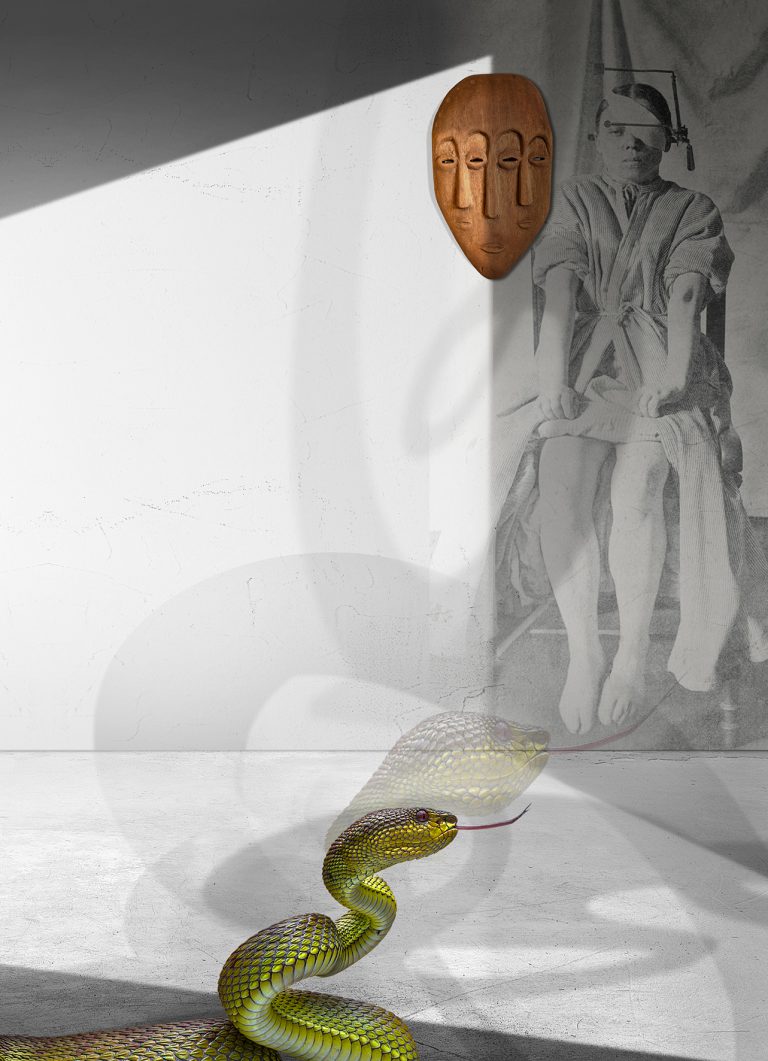The world is at a standstill and social distancing is part of a new norm, but studio life goes on! Braverman Gallery reached out to Ilit Azoulay for a short conversation that offers a glimpse into the artist’s studio, work and thought process, and life under lock down.
WHAT ARE YOU MOST FASCINATED BY THESE DAYS?
It is often my work’s topic that is on my mind. Under regular conditions, without restrictions such as physical distancing, my practice involves a lot of fieldwork and working with a team. I hold meetings, conduct interviews, gather testimonials, photographs, and stories, and use the gathered information to reveal gaps in history. The isolation period at home led me to find new ways of working. Instead of building a repository of images based on my fieldwork, I became interested in digital image banks, as well as other existing, historical photo archives. While delving into stock photo images I found hundreds of photos depicting facial expressions of women in distress. A result which made me question why such a high demand for imagery of women in distress exists. In an attempt to trace how photography historically served as a platform to stage, as well as realize, a patriarchal dynamic between male clinicians and female patients and tie together scientific knowledge and institutional power, the found material has occasioned a developing body of work that contemplates the reevaluation of hysteria as resistance to patriarchal culture.
WHAT ARE YOU READING RIGHT NOW?
I am fully immersed in Didi-Huberman’s [1] Invention of Hysteria, closely connected to the topic I am researching at the moment, the book is a study about the alleged female disease frequently diagnosed in the 19th century. It focuses on French Neurologist Jean-Martin Charcot’s research and the relation of photographic documentation within this medical field.
DO YOU HAVE A STUDIO ROUTINE? WHAT IS IT LIKE?
The distancing measures in Germany have kept me away from my studio, where you will usually find me on a daily basis. Now that certain restrictions have been lifted, I am able to return to my studio universe once again – I really missed it.
WHICH CITY WOULD YOU SAY HAS IMPACTED YOUR ARTISTIC PRACTICE, AND HOW?
Jaffa, for sure. It was my home base for many years, and my father runs a record shop there since the 1950s. Jaffa doesn’t lie – or rather, it’s a city that doesn’t hide its “inner organs” – the political dynamics, the coexistence of different things, it’s all present on the streets of the city in the noise, food, music, clothing and so on. Jaffa doesn’t offer a bubble-lifestyle, the multifaceted city is down to earth and maintains its authenticity.
WHAT IS THE BIGGEST MISTAKE YOU MADE IN YOUR LIFE?
I don’t believe there’s such a thing as mistakes or coincidence. I deeply believe that all events are challenges we can choose to accept, and learn or develop from – or not.
DESCRIBE YOUR IDEAL LUNCH.
Something fresh and not too heavy that might devitalize me.

Sunday
Monday
Tue – Thu
Friday
Saturday
Closed
By appointment only
11:00 – 18:00
11:00 – 14:00
11:00 – 14:00
Design by The-Studio
Code By Haker Design